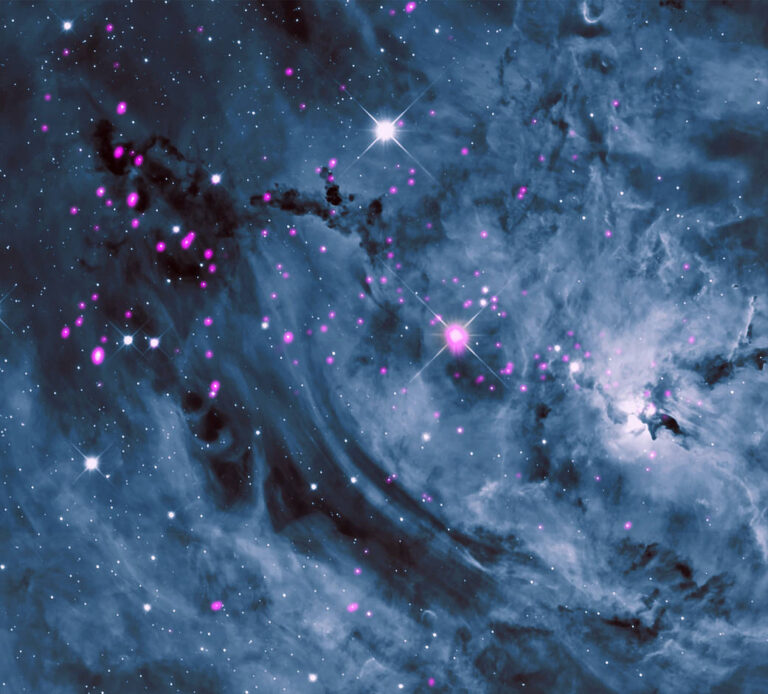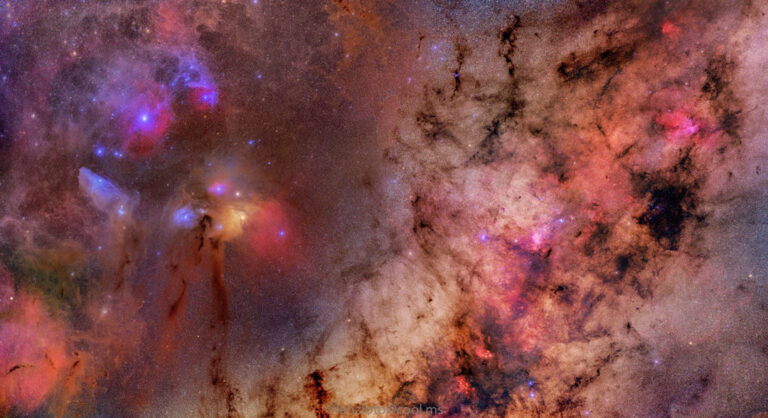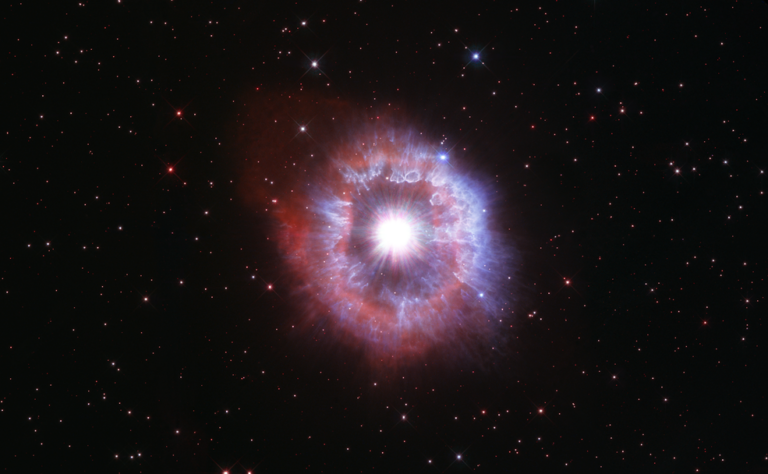礁湖星云孕育恒星
Known as NGC 6523 or the Lagoon Nebula, Messier 8 is a giant cloud of gas and dust where stars are born. At about 4,000 light years from Earth, Messier 8 provides astronomers an excellent opportunity to study the properties of very young stars. Many infant stars give off copious amounts of high-energy light including X-rays, which are seen in the Chandra data (pink). The X-ray data have been combined with an optical image of Messier 8 from the Mt. Lemmon Sky Center in Arizona (blue and white). Image Credit: X-ray: NASA/CXC/SAO; Optical: Adam Block/Mount Lemmon SkyCenter/University of Arizona 梅西耶8号被称为NGC 6523或礁湖星云,它是一个巨大的气体和尘埃云,恒星在这里诞生。在距离地球约4000光年的地方,梅西耶8号为天文学家提供了一个研究非常年轻的恒星特性的绝佳机会。许多新生恒星释放出大量的高能光,包括X射线,可以在钱德拉的数据中看到(粉色)。X射线数据与来自亚利桑那州莱蒙山天空中心的梅西耶8号的光学图像(蓝白两色)相结合。 影像来源:X射线: NASA/CXC/SAO; 可见光:Adam Block/Mount Lemmon SkyCenter/University of Arizona










